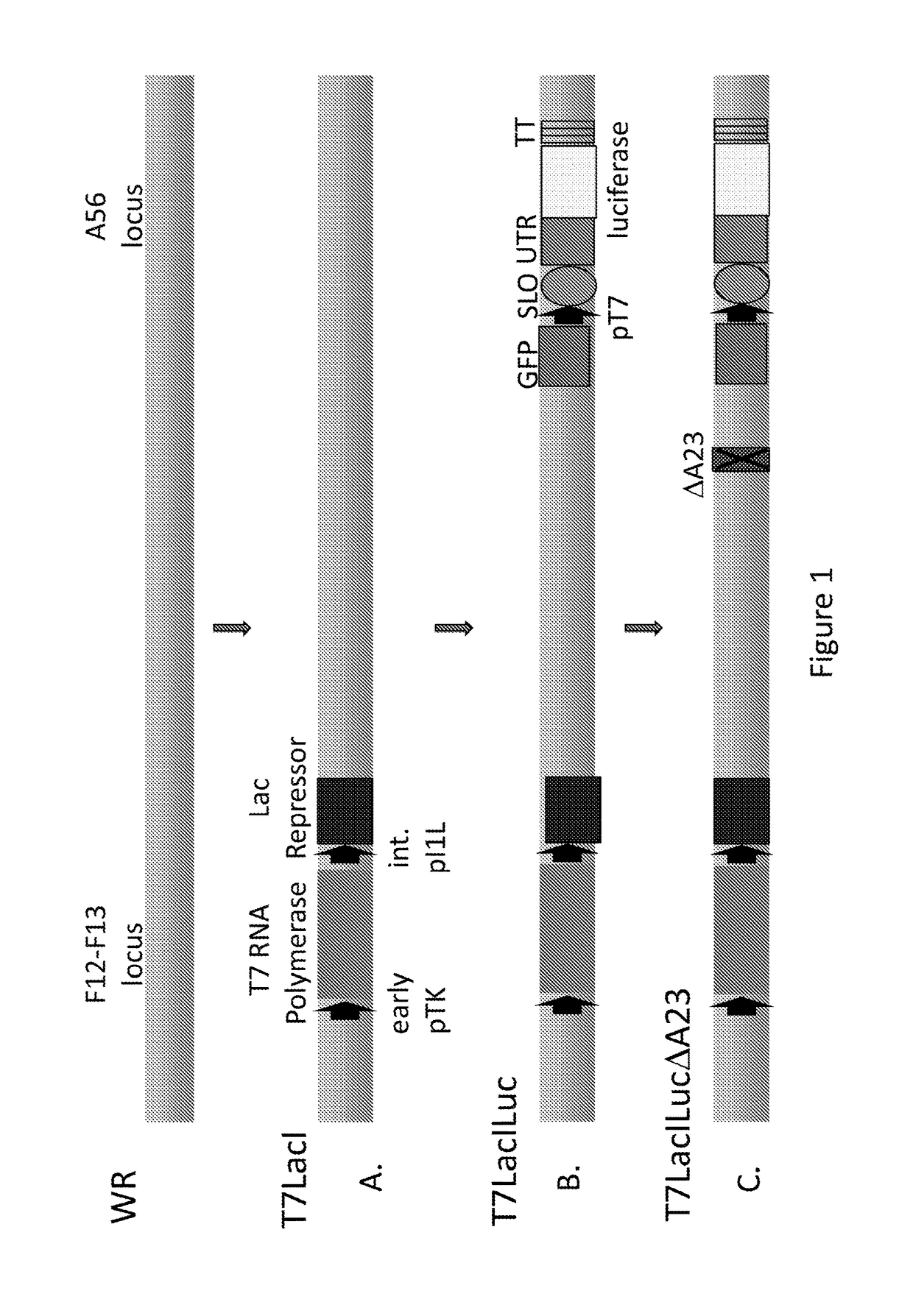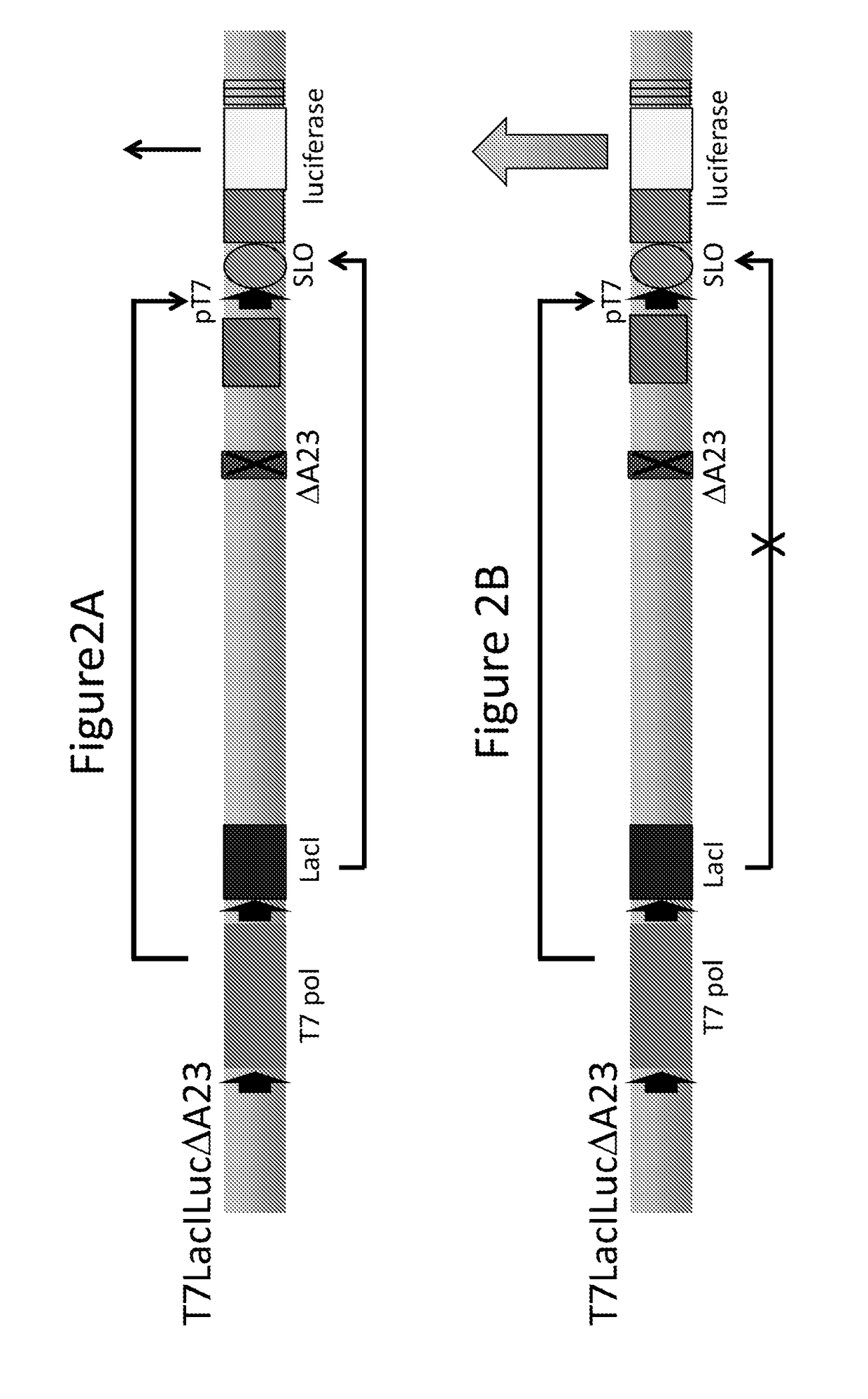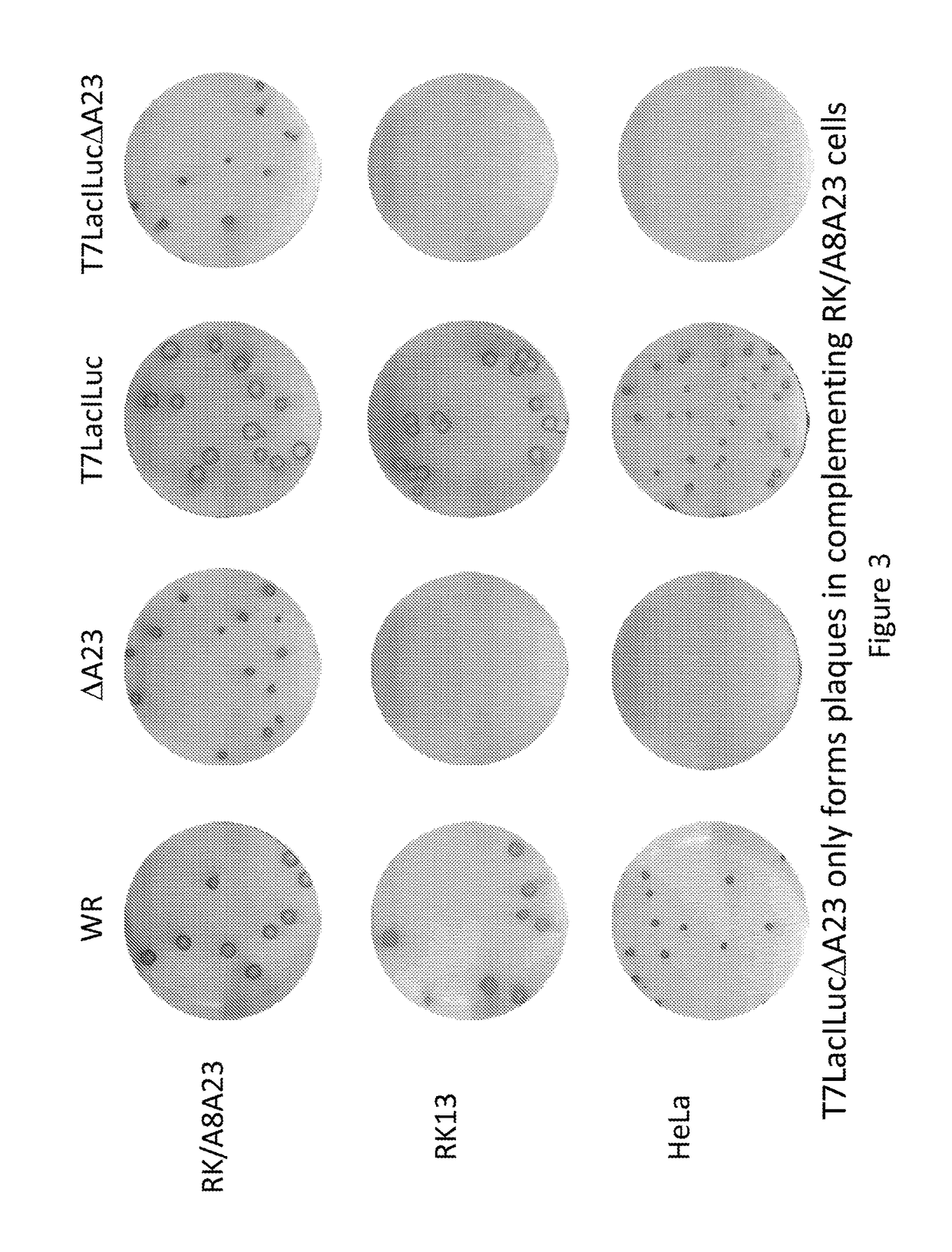Virus-based expression vectors and uses thereof
a technology of expression vectors and viruses, applied in the field of virus-based expression vectors, can solve the problems of not meeting all the needs of vectors existen
- Summary
- Abstract
- Description
- Claims
- Application Information
AI Technical Summary
Benefits of technology
Problems solved by technology
Method used
Image
Examples
example 1
[0127]This example demonstrates the construction of vectors of this disclosure used for further expression testing. FIG. 1A shows the scheme for inserting a bacteriophage T7 RNA polymerase gene, under the control of the vaccinia virus thymidine kinase (TK) promoter, and the E. coli lac repressor gene, under the control of the vaccinia I1L promoter, between the F12-F13 genes in WR strain of vaccinia by homologous recombination. Briefly, DNA comprising the bacteriophage T7 RNA polymerase gene linked to the vaccinia virus TK promoter, and the lac repressor gene linked to the vaccinia virus promoter vaccinia virus I1L promoter, was cloned between the XhoI and XmaI sites of plasmid vector pRB21 (Blasco and Moss, 1995). The resulting transfer plasmid named WX52 was transfected into cells infected with the virus vRB12 (Blasco and Moss, 1995) and the new recombinant virus vT7LacI was isolated (See FIG. 1A).
[0128]FIG. 1B shows the scheme for inserting the luciferase gene into the A56 gene of...
example 2
[0130]This example shows the expected effect on Luciferase expression from the T7LacILucΔA23 virus produced in Example 1, in complementing cells and noncomplementing cells. FIG. 2A indicates that in the complementing cell line, RK / A8A23, T7 RNA polymerase expression is regulated by the weak early TK promoter and transcribes the target gene. However, the E. coli lac repressor gene, lad, under the control of a strong intermediate promoter, I1L, is transcribed abundantly and the repressor protein binds the lac operator (SLO) to minimize transcription of the target gene. FIG. 2B shows that in the non-complementing cell lines, RK13 and HeLa, T7 RNA polymerase will selectively transcribe the target gene with T7 promoter in replicated viral DNA in the absence of vaccinia virus intermediate and late transcription. Therefore, only the target protein is abundantly synthesized in these cells.
example 3
[0131]This example demonstrates the selective replication of the vectors of this disclosure. Infected cells were fixed at three days and immunostained with anti-vaccinia serum. FIG. 3 shows the resulting plaque size of four viruses in three cell lines. The viruses, WR and T7LacILuc, formed similar plaques in the 3 cell lines, RK / A8A23, RK13 and HeLa. The new prototype vector, T7LacILucΔA23, in which the intermediate transcription factor, gene A23, has been knocked out, only formed plaques in the complementing RK / A8A23 cell line.
PUM
| Property | Measurement | Unit |
|---|---|---|
| wavelengths | aaaaa | aaaaa |
| wavelengths | aaaaa | aaaaa |
| therapeutic composition | aaaaa | aaaaa |
Abstract
Description
Claims
Application Information
 Login to View More
Login to View More - R&D
- Intellectual Property
- Life Sciences
- Materials
- Tech Scout
- Unparalleled Data Quality
- Higher Quality Content
- 60% Fewer Hallucinations
Browse by: Latest US Patents, China's latest patents, Technical Efficacy Thesaurus, Application Domain, Technology Topic, Popular Technical Reports.
© 2025 PatSnap. All rights reserved.Legal|Privacy policy|Modern Slavery Act Transparency Statement|Sitemap|About US| Contact US: help@patsnap.com



